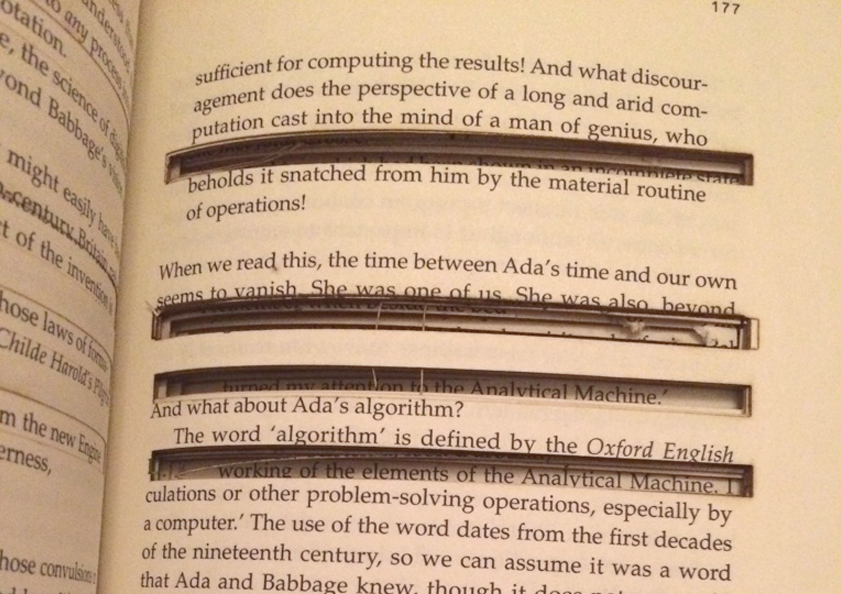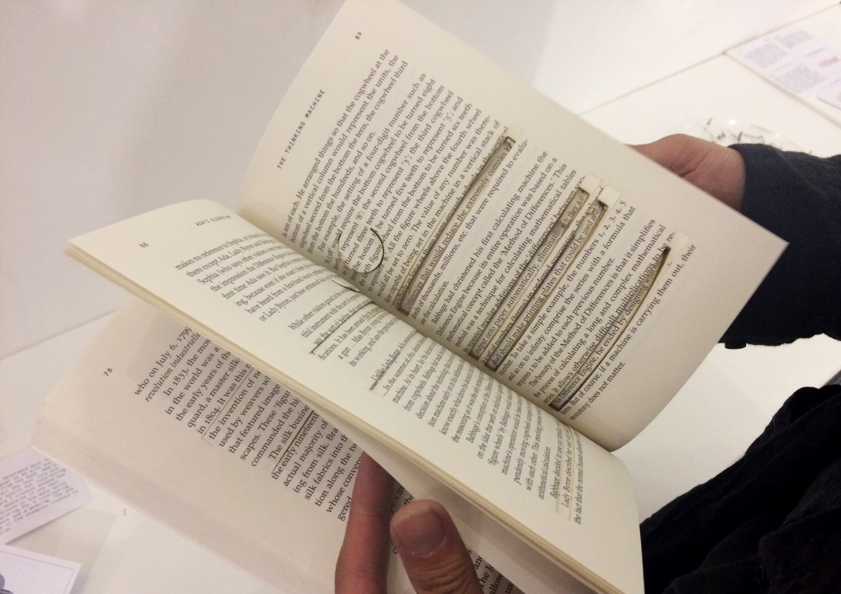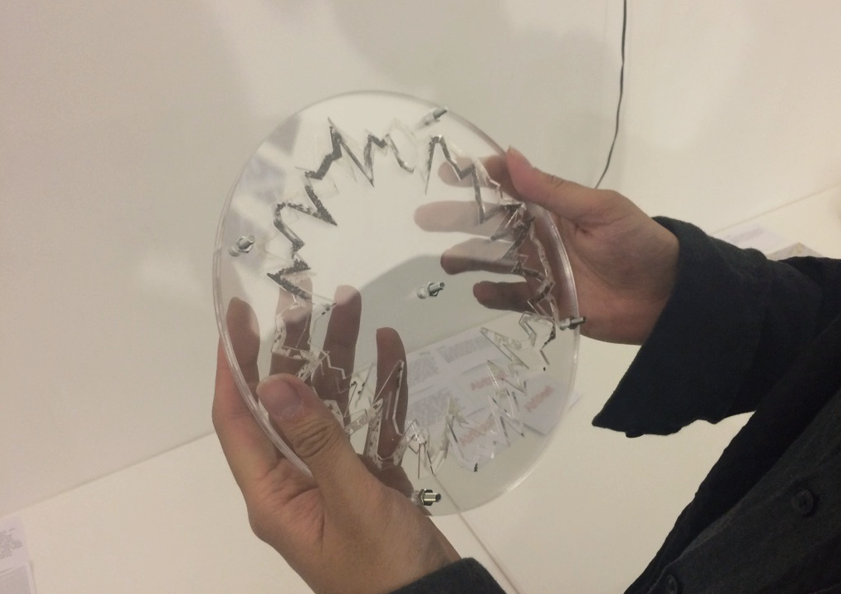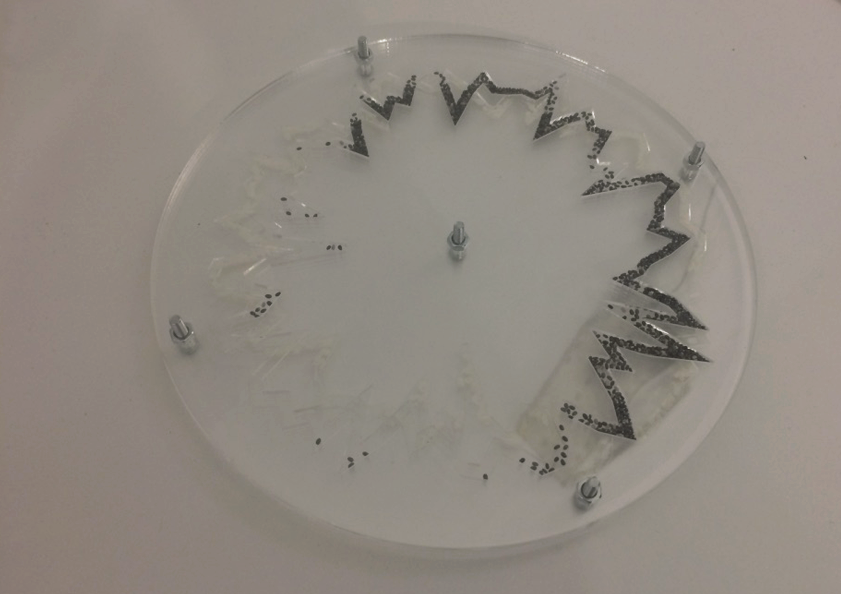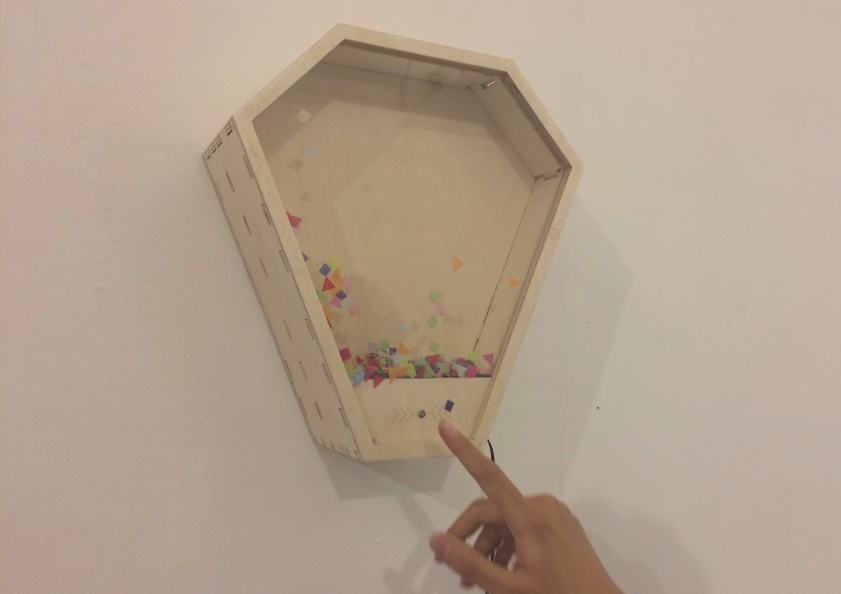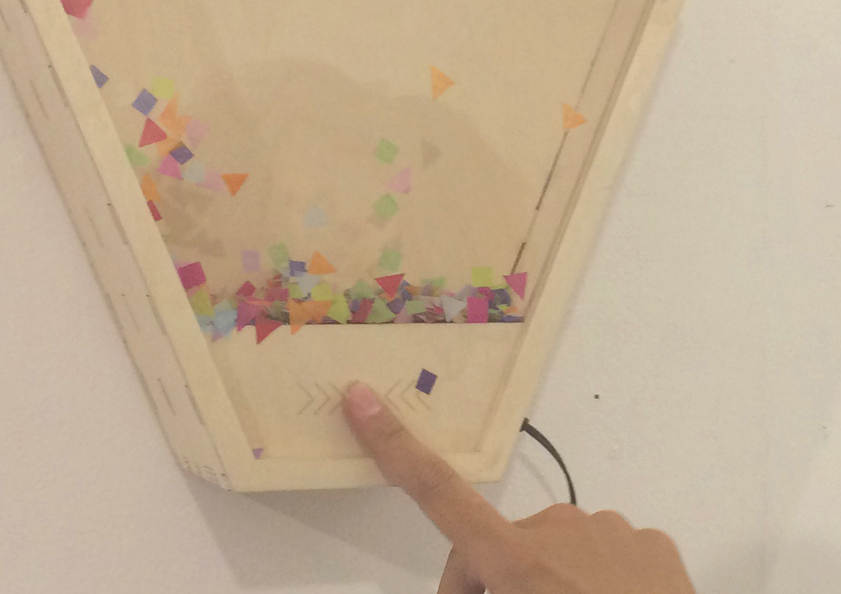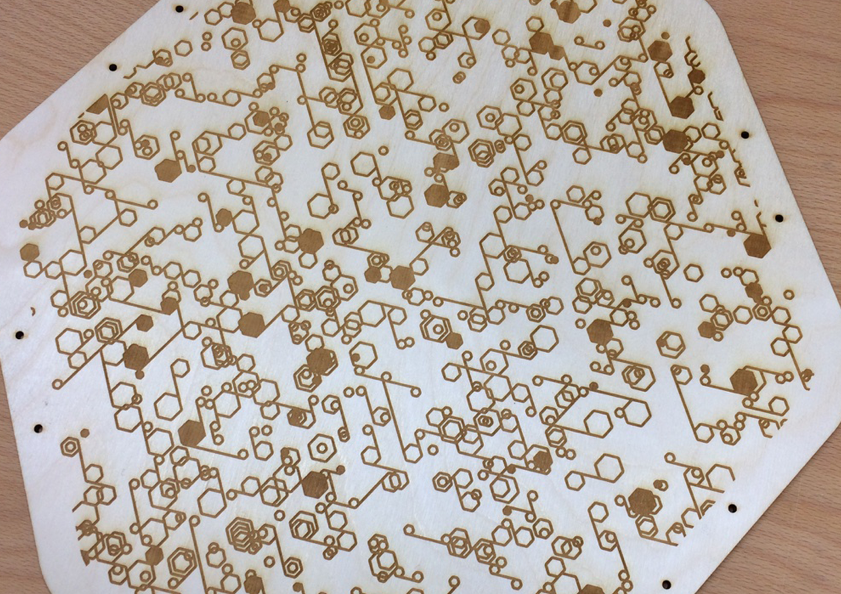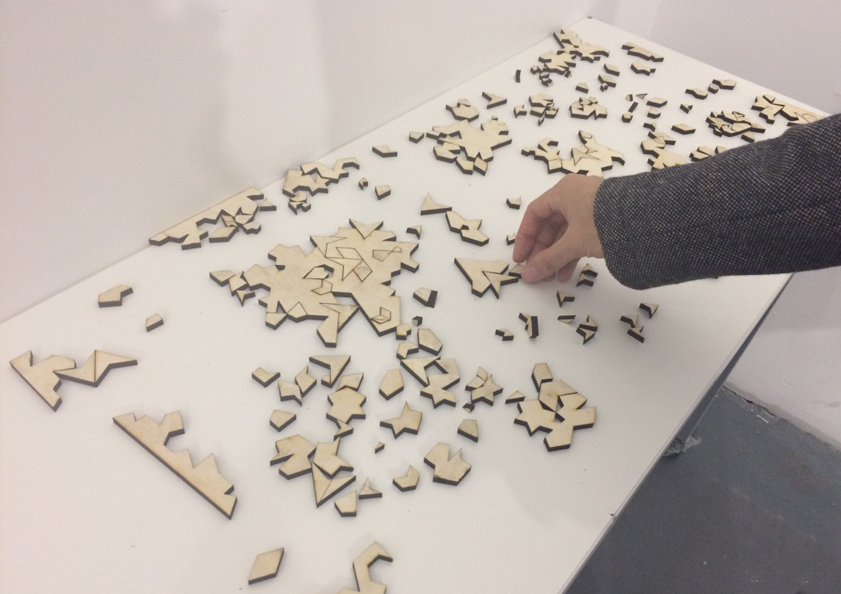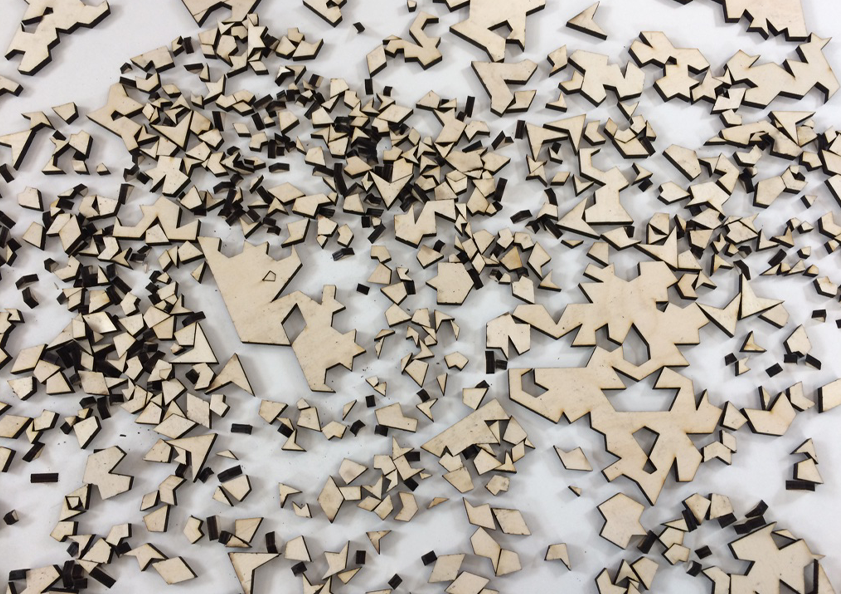Means / Situations / Void / Suggestions / Continuous
This series explores ways of translating ideas and data to let the viewer explore the meaning of the work beyond the visual representation and looking for meaning in the visualisation, aiming to extend the visual experience. The physical objects are conceptualised into artworks to let the viewer interact and discover the meaning in a playful way.
produced by: Saskia Freeke
Study 01: Means
Ada Lovelace, the first to recognize the full potential of a “computing machine” and the first computer programmer. She was the first to recognise that the machine had applications beyond pure calculation, and created the first algorithm intended to be carried out by such a machine (1). Not knowing that 150 years later these machines were further developed that most people use multiple ones, even at the same time. This generation is growing up with technology, learning to use it at an early age. Most of the people using these machines, don’t know how these machines work and how it is created. It is interesting to see how something is constructed and what is needed to create these machines. The development of creating technologies gets easier every day and we are able to interact with these machines quicker. Task are faster computed then before and it feels they became part of us.
1: En.wikipedia.org. (2017). Ada Lovelace. [online] Available at: https://en.wikipedia.org/wiki/Ada_Lovelace [Accessed 26 Apr. 2017].
Study 01: Means: Virtual
With this study I wanted to explore the meaning of the computer. By searching through data I explored what I could visualize and how to express this. The virtual artefact developed more into a tool to research what to do with the physical artefact. From the book ADA’S ALGORITHM‘ I compressed all the text into one text file and started to search for interesting words. The software I created showed how many times words appeared in the text, in order of how many times it appears. Trying to play around on how many words to show and searching for an interesting visual appearance and a meaning. The end virtual video animates words from the one that most appear to the words that appear less in the text. The amount gets visualised with a circle and the text appears to big in the start. Slowly moving to smaller words and circles. Sometimes the compositions become readable snippets, this allows the user the explore the words not only on their own, but also as connections.
Study 01: Means: Physical
For the physical artefact I bought the book in print with the idea to laser cut the highlighted words in the book. I went back to the virtual sketches and played around more with what to laser cut in the book. One word that was interesting and appeared in the book 110 times was ‘machine’. This word highlights the use of the laser cutter to create visualise something in the book. I looked for all the pages and sentences where machine would appear and highlighted this. By laser cutting a rectangle of the size of a sentence in the pages before a sentence with machine, I wanted to highlight these sentences with the word. Emphasising that this is the most important thing. We often describe a book as an analogue object, not considering that the book is created with the use of machines. Searching for all the sentences on every page in the pdf and when laser cutting the pages it almost felt that I have become the machine. Performing these similar tasks repeatedly. What highlights the way we sometimes are a machine ourselves.
Study 02: Situations
In everything, everywhere, there is movement. Nothing stays the same, halts at one position or have the same expressions. A lot of things in nature and our lives have cycles, they continue to move al the time, but none the cycles are the same when starting again. Different forces affect the cycle, sometimes a lot, sometimes a little. We see this in nature, like water cycles, going from the sea to the clouds, back to land and sea. In machines we can see cycles too, like when we use the computer, different tasks effect certain cycles.
Study 02: Situations: Virtual
In the virtual representation there are three streams of CPU data presented, system, idle and user data. The system and the idle streams are presented the same and are the opposite of each other. The user is represented as ellipses and is floating on top of the system and idle data to give focus on the user. Because it’s the user that mostly effect the system and it usage. Showing idle and system and being opposite to each other shows that forces are effecting each other.
Study 02: Situations: Physical
The physical object is a transparent circle with two layers of streams in it. The user is translated into points/beads that are moving in the streams. The user can interact with the object and move the points around in the streams, showing that the forces of the user has effect on the way you move in these streams.
Study 03: Void
To promote a product to let people buy it you need to emphasize the qualities of the product. Sometimes this include coming up with qualities that may be not visible for the consumer. One of the interesting things to sell is air. Seen in a form of a hand blower we often use in public restrooms. These air blowers have names like AirBlast, ExtremeAir, Blast and Airforce to give us the idea that this product is amazing to use.
Study 03: Void: Virtual
The virtual representations of this idea is an interactive artworks that shows text consisted out of air bubbles. When interaction with the text, the bubbles moves away into void. When the word is gone a new word appears. Showing that there always will be something better or amazing again. The bubbles floating away tries to emphasise the idea of all these words, how wonderful they might be, are all air.
Study 03: Void: Physical
For the physical object the idea is translated into a failing enclosed confetti machine. The confetti are bright and colorful, to highlight the wonderfulness when you celebrate. The enclosed object reflects the machine, like the air hand blowers. You hold your hand before a little light sensor to start a blower to blow the confetti around in the object. You hear the blower going on, only the power of the blower isn’t sufficient enough to blow the confetti like crazy around. What you would expect. The power to the blower goes on and off in time intervals. With the not enough power and the intervals the user doubts if the machine is working or if he/she does the right thing.
Study 04: Suggestions
As creative humans we are looking for ideas often to start our next project. We brainstorm for that right idea, we want that perfect idea to come to us. But it’s not about the perfect idea, the ideas are floating in the universe for us to pick. Some ideas will come to you, some will pass by. Ideas are shared, we can have the same ideas. It is what you do with these ideas that count.
Study 04: Suggestions: Virtual
The virtual representation shows agents looking for ideas to stay. They are floating around this network of ideas. Agents will sometimes move to another idea, or the idea goes away.
Study 04: Suggestions: Physical
In the physical object the idea is translated into a playful artwork, a maze game that you can’t solve. The agents are represented as small metal balls. These agents are moving around in the object finding spots to stay. The network of ideas is engraved into the wood and reflect the universe. The viewer is invited to play with this, the sound that emerges when you move the balls around are sounding calming. Giving the user something to explore, but also calms and ensures that even this maze game isn’t solvable, beautiful things are happening.
Study 05: Continuous
Looking at a microscopic level to things we see that small forms being connected and disconnected. Growing to each other and being separated. This goes on continuous and you can also see this forming translated into larger scales, or even more smaller scales.
Study 05: Continuous: Virtual
The virtual shows snippets of forms created over time. Moving together but also being separated. The forms are being created continuous. Almost looking like a puzzle that changes.
Study 05: Continuous: Physical
The virtual is translated into a physical puzzle, giving the viewer the change to connect these small forms together. The puzzle is not intended to be solved, but gives freedom to play and create your own connections.
































































